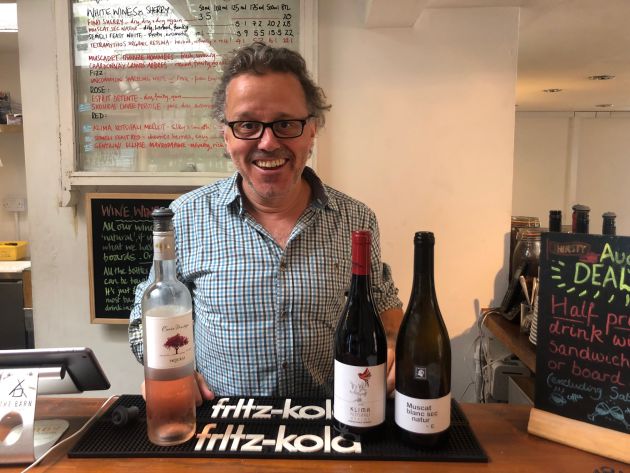
Hybrid indies: Opportunities and pitfalls
The rise in independent merchants looking at the hybrid model and offering a drink-in option to complement traditional off-trade sales has seen the landscape change in recent years.
For many businesses this has seen a positive shift in revenue and customer numbers, but it can be hard work and costly to get the formula right.
Cambridge-based independent merchant Thirsty has two sites in the city, offering customers drink-in and take-out at both with food truck, guest chef and events calendars adding value to the hybrid offering.
We caught up with owner Sam Owens to discuss the advantages and dangers of the ‘on-and-off’ hybrid model, why he’s such a fan working this way, and his tips for traditional indies looking to make the switch and offer something extra.
Opportunities
“Without doubt the biggest opportunity of working this way is the margin; rather than selling at 30-40%, if you can sell at 60-75% then that’s obviously massive, and it works for us,” says Owens.
“Secondly it’s about bringing the whole thing to life, making the business not just an abstract two-dimensional transition, but turning it into an experience. Everyone is after the experience and with drink-in you have that engagement and that involvement.
“Thirdly, you can sell more take-out or retail off the back of people buying drinks to sit in. Granted it’s a minority who come in to do both, but it’s more about the opportunity you have if you are a bar as well as a retailer. Here’s an example: We have several new Greek wines on by-the-glass at the moment and the other day a customer came in and had a glass of the Xinomavro and loved it and she took two bottles home with her. She’d never tried it before and she would never had chosen it as a simple off-trade sale even with encouragement from a staff member; she wasn’t coming out looking for two bottles of wine to take home but that’s what happened. Everyone’s happy and it’s driven additional retail sales.”
Pitfalls
“The biggest downside is staffing; the cost of staffing and finding the right people to work the often unsociable hours. It’s one thing having a wine shop that’s open to 7pm or even 8pm, you can manage it on one person, but if you’re running it as a bar especially if you’re doing a little food (cheese and meat boards, etc) there comes a point where you have to have someone else too, and you’re staying open till 9pm, 10pm, 11pm, so staff costs can add up as well as the stress of making sure all shifts are covered.
“It’s tiring too, it can be a long old shift. If you’re selling something to someone as a retailer you have to be knowledgeable and nice but when it’s in a bar environment there’s a whole additional element on top of that; you have to create a space that’s comfortable, that feels like a nice place to be, and essentially you’re becoming a publican and you have to have the chat and the banter with the punters.
“You also have to think about food; anyone who’s selling wine to drink it, you have to offer something to eat from a packet of crisps, to cheese plates to food trucks. You can’t really approach doing the on-sales without a good plan about what you’re going to do about food. All these things take extra time and expertise.
“From a licencing perspective you’ll need to apply for an on-premises licence as well as an off-trade one, and technically you need to consider whether or not you apply for a planning use change to include A4 (drinking establishment) and/or A3 (restaurants and cafés), and that’s not always easy as local authorities all have different rules and regs and it costs money to put in.”
Revenues
“When we changed the business to create more space for drink-in and more drink-in options, such as beer, wine and cocktails on tap, our revenues went up straight away. We now have 14 beers on tap, six wines and two cocktails, and we now have a huge beer selection, which has also driven the growth and revenue, especially among the drink-in crowd.”




